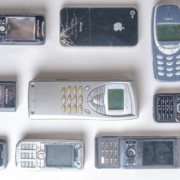How the Charities and NFP Sector Is Changing; From Mass Marketing to Personalisation
By: McCrindle
The charities and not-for-profit (NFP) sector are core to Australian communities with the oldest charities in Australia dating back more than 200 years.
In the last few years the charity and not-for-profit sector has experienced significant shifts in donor expectations, digital disruption and de-institutionalisation.
Donors looking for a personalised experience from charities
The days of ‘set and forget’ generosity is on the decline with donors of all ages expecting a more personalised experience.
Where once the personalised experience was provided for major donors, it has now become a mass donor expectation. This is in line with a broader societal shift towards customisation, where personalisation is not a suggestion but an expectation.
“The whole experience has shifted from mass-marketing of value or meaning to ‘I want an individualised or personalised experience with the not-for-profit’. In the old days that would have been a major donor expectation, now it’s a mass donor expectation.” – Richenda Vermeulen, Founder and CEO, ntegrity agency
The creation of meaningful connections
In addition to a personalised experience, givers are looking to build relationships with the organisations they partner with. In many areas of society there is a swing away from the institution and a growing desire to connect to a cause and to people.
“People aren’t drawn so much to organisations or institutions anymore; they’re drawn more to a cause.” – Tim Hanna, outgoing CEO, Compassion Australia
Givers are looking for meaningful connection and involvement.
The challenge is that this can mean something different to everyone. Givers are not always expecting to be practically involved, but even just understanding the impact of their specific donation can create a sense of connection.
“Meaningful connection can take on many different forms for the donors. It isn’t necessarily that they roll up their sleeves and physically become involved, it can simply mean that we share with them the specific impact or outcomes of their financial contribution.” – Sarah Pennell, General Manager, Foodbank Australia
Digital disruption spurring a competitive market
The rise of the digital has opened the door for new charities and NFPs to enter the scene, creating an increasingly competitive landscape. New charities and NFPs can enter the market and excel quickly because of their creative, digital and agile approach.
This can create challenges for legacy NFPs and charities who may be slow to change and have relied heavily on their reputation in the past.
“The largest charities are still dominating the giving landscape but there is an increasing level of choice for donors. Digital disruption has given the donor more information, more charities to choose from, more ability to seek transparency and have conversations with brands – ten years ago you could rely a lot more on your brand name and reputation.” – Richenda Vermeulen, ntegrity agency
Growing scepticism of charities
Over time Australians have started to question the efficiency and effectiveness of charities. They are more cautious about which organisations they support, with the digital age allowing potential givers to research the organisation thoroughly before deciding to donate.
Givers are looking for organisations that can clearly show the difference their contribution is making.
“Most individuals nowadays probably bring a more cautious approach, not so innocently trusting the enterprise…Looking for anything on social media that suggests there is a shadow over the organisation from previous activities or behaviours.” – George Savvides, former Chairman, World Vision Australia
The rise of lifestyle giving through social enterprises
The rhetoric of Australian society is increasingly focused on making consumer decisions that have a positive impact. People are looking for ways to fulfil a need while still doing social good.
“Society as a whole I think is more open to doing good. Making sure that from their purchases, to the decisions they make they have a positive impact on the world, people and the environment”. – Daniel Flynn, Co-founder Managing Director, Thankyou
The benefit of social enterprises is that Australians receive something tangible and usable for their support that they generally would have purchased anyway. The impact this will have on Australians’ generosity towards charities and NFPs, however, is yet to be fully realised.
“Younger donors are aware of the impact they can make through both donations to charity and purchases as a consumer. We can’t yet quantify whether less charitable donations are made because people are buying from social enterprises instead. What we do know is that those likely to donate – are likely to buy ethically.” – Richenda Vermeulen, ntegrity agency
For more information
If you found this article interesting, download our free Australian Communities Report and Infographic for more information on the trends impacting the future of the not-for-profit sector.
Article supplied with thanks to McCrindle.
About the Author: McCrindle are a team of researchers and communications specialists who discover insights, and tell the story of Australians – what we do, and who we are.



